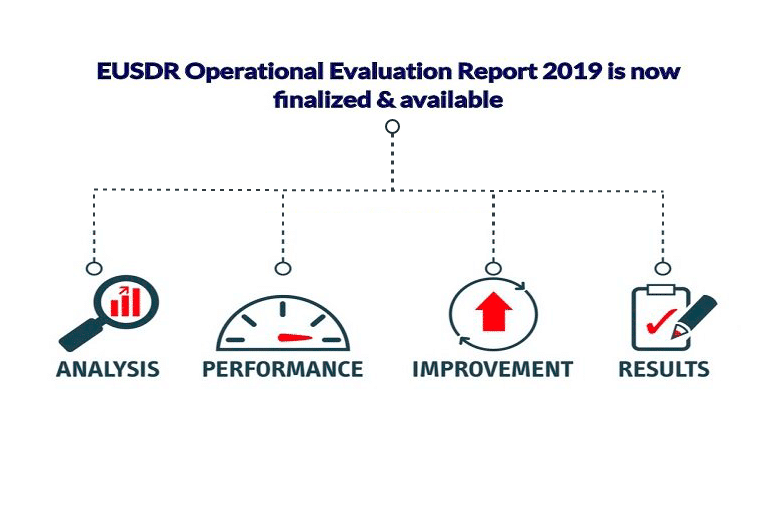The EUSDR Operational Evaluation was finalized, the main focus falling on governance aspects, communication and stakeholder involvement of the EUSDR. The final report may be downloaded here.
The operational evaluation measured the strategic dimension, governance dimension (operational level) and cross-cutting and transversal issues. Here are some excerpts from the conclusions drawn in the evaluation report.
* The findings of the evaluation indicate that there have been some achievements of the EUSDR at strategic level, but the overall impact of the strategy is not very high. Questions on the level of change triggered by the EUSDR in different policy fields, on the impact of the EUSDR on national or regional laws, regulations and organizational structures as well as on planning processes reached a mean score between 2.6 and 3.2 on a scale from 1 (no change/impact) to 6 (high level of change/impact). Only the consideration of the EUSDR in bilateral/international issues was ranked higher (mean 3.7).
* The major concrete achievement is the set-up of cooperation structures and new partnerships. In some PAs visible progress has been achieved, but in general internal actors largely agree that the momentum of EUSDR has decreased.
* Not only at strategic but also at operational level it is important that the right stakeholders are involved. The evaluation findings indicate that the current state of play is ranked as satisfactory but with room for improvement. The lack of persons having actual influence on policy-making was the major point of criticism. Also the involvement of additional stakeholders (e.g. cities, chambers and academia) was suggested in order to increase the added value and impact of the activities.
* There have been some structural and institutional changes brought by the EUSDR, but overall, the outreach and spill-over to the national level seems to be little. According to the perception of the interview partners, the outcomes of the SG meetings are not sufficiently transmitted to the national level. The few reported exemplary achievements related to institutional change are a service office and inter-ministerial consultation groups.
* In order to safeguard efficient and synergetic implementation procedures, wellfunctioning workflows and processes among key actors are vital prerequisites. The participants of the online-survey assessed the general workflows/processes satisfying, sufficiently transparent and rather formal than informal. The best assessment was reached at PA level, followed by the EUSDR level. Lower ratings are found at national level. The efforts that are needed to ensure the workflows/processes in relation to the outcome are assessed relatively high at all levels.
* Projects and activities of strategic value are an important tool for making results visible. In this context, Interact has highlighted the concept of “project chains”, which are projects that are interlinked. This linkage may be a horizontal one (linking topics within a PA or a pillar), it may link projects across funding schemes or with national/regional projects or activities, thus allowing a wider outreach of the strategy. This implies that thematic coordinators of a PA actively build, implement and monitor such linkages. Good EUSDR examples are the DREAM project or Danube Parks.
* In general, the participants of the online-survey are relatively satisfied with the EUSDR communication flows. This is the case mainly at PA level and at EUSDR level. At national level the satisfaction rate is lower. Overall, the communication and PR tools meet the information needs on the EUSDR, but only to a limited extent.
* Staff fluctuation limits the strategic outreach, the options for concrete action and it is a major obstacle to anchor and stabilise institutional cooperation. A stable institutional memory is required in order to counteract the adverse effects. This could be an ancillary function of the DSP.
* In many cases, the persons sent to meetings lack the capacity and/or mandate to take decisions, which creates frustration and diminishing commitment.
* Common projects and actions are considered as a major success factor in terms of mobilising internal forces as well as in attracting political interest and thus reinforcing the momentum.
***
This Operational Evaluation constitutes only a first contribution to evaluation and monitoring of the Strategy. For instance, the new EUSDR monitoring system, which will be launched by the end of 2019, is intended to provide a solid basis for tracing functionalities, evolvements and achievements both in operational and in policy terms.




